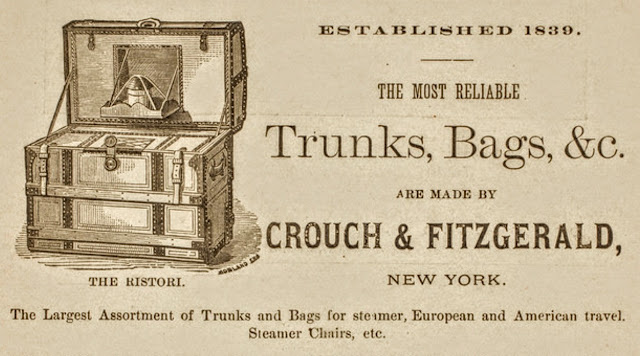


 |
| The mixed metals were a great choice for the Regency era. This was a time in which the Prince Regent had a lot of gilt tableware on display at the palace. According to the Royal Collection Trust, “The Grand Service is the magnificent silver-gilt dining service commissioned by George IV (1762–1830) when Prince of Wales. It is made up of over 4,000 pieces for dining and display in a vast range of styles. Among them are elaborate dessert stands, candelabra and ice pails, as well as simpler items like trays and egg cups.” |
1. How did you choose the menu and various elements you used in your setting and why? Please explain each of the utensils in your setting… For which of the foods on your menu (or course) was each different item intended?
1. Since in the competition was the condition to set the table for at least five different dishes, I settled on the following:
- The first hot dish is chicken broth with celery (after cooking the celery, it is removed along with the chicken), the broth remains clear-and can be eaten with a broth spoon or drunk from a broth cup, holding the handles. The bouillon cup is visible in the picture.
- Next on the menu is a soft-boiled egg and bread toast. (I was specifically interested in whether eggs were served for dinner inEngland. It turned out that they were). For soft-boiled egg, an egg-stand is provided on the table, an egg spoon and a small plate for the shell.
- Further on the menu, after the broth, Strasbourg pie is presented(a bread plate is intended for it on the top left). Since often theStrasbourg pie is a meat pate, a pate knife is intended for it, which also lies on a bread plate;
- Before the main hot dish, a warm salad of green beans in a creamy sauce is served. A salad fork and knife are intended for it(they are slightly smaller in size than a table fork and knife), as well as an upper shallow plate;
- The main hot dish – roast beef with mustard sauce and a side dish of mashed potatoes and spinach stewed in butter. For it, a lower, shallow plate and a dinner fork and knife are intended (fully gilded), as well as an individual gravy boat for mustard sauce and a set for spices( salt and pepper)
- After the break, guests move on to desserts. For desserts a spoon-scoop (for Creme Nouveau) and a fork for raspberry tart are intended. Desserts are brought after the used dishes are removed from the table;
- For drinks there is a large crystal glass on a stem (Mineral water), a glass for red wine (it is located in the middle) and a glass-bowl for Sussex sparkling wine, which is served with dessert;
- Besides of these elements in a personal cover has a linen napkin with a ring, a cover card and a menu on a stand.
- …a s well as a personal compliment for the guest – a small boutonnière of garden flowers from the hosts of the reception.
2. When I carefully read the conditions of the competition, I studied all the eras, the recipes corresponding to these eras, the elements of table setting, I also watched several films, the Regency Era seemed closest to me in terms of aesthetics. I carefully studied the dishes and cutlery that were produced by manufactories indifferent eras, compared with what I have at home in the cupboard. I had to buy a few things from an antique shop, so you could say that the owner of the shop shared the excitement of the competition with me. So I bought dinner plates, a plate for bread, a part of knives, forks and spoons decorated with oak leaves in this store, as well as an individual gravy bowl and a device for salt and pepper.
I did a little historical research and found in the book of old English cuisine a reception menu dating back to the Regency Era (1811-1830), I also found in the Internet several examples of menus in the French, Polish and Russian aristocratic environment of that time I also love to cook, I am interested in cooking from different countries and eras. I really like the Regency era for a large number of balls and parties, for combining different cuisines, for an abundance of beautiful dishes. This is the era of carelessness and lightness
3. How, if at all, did Covid-related social restrictions affect your choice of setting? Were you ready to celebrate? Feeling in the mood to do something different? Etc…
3.Before Covid, as I mentioned, we got together very often with family and friends at my home and I set the table for 12 people. Then there was a period of apathy, when there was no desire for parties at all. And now we are going as a family again. And I'm planning to have a Christmas party for my friends at home. Most likely, I will even cook dishes from this menu for them. And I'll tell you about participation and victory in your competition
4. Have you always enjoyed a properly set table? Or, if not, was the table setting something you learned to enjoy through your social life and/or business later on in life?
4. Oh! For as long as I can remember, mom and dad have always set the table beautifully, prepared delicious dishes and decorated them beautifully. There was a white tablecloth and linen napkins, a complete set of cutlery and crockery. So you could say I grew up with good table manners.
5. Did you do any research on table setting etiquette before setting your elements at the table?
5. Of course, I had to consider various patterns of dishes and cutlery in order to get as faithfully as possible to the Regency Era style. Floral motifs on plates and cutlery handles, romanticism and tenderness in decorative elements, English solidity and French elegance - this is how I imagine this table. Just by chance, while reading the biography of Benjamin Disraeli, I found a mention that glasses with a wide bowl for sparkling vine were only in vogue then. And I chose this one.
6. Do you plan on entering again next year?
6. I would like very much to enter the competition next year.

















